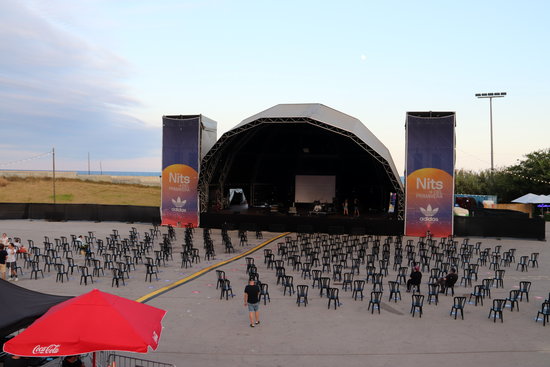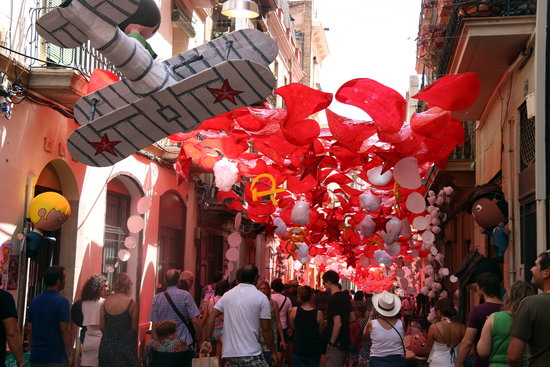Tourism, concerts, local festivals: How will summer 2021 look?
Catalan Tourism Board director expects visitors to return this summer, while festivals will likely look different to normal

As the vaccination rollout advances with more and more deliveries of jabs each month and the population rising in immunization rates, there are high hopes of a busy summer this season.
Last year saw unprecedented drops in tourism numbers, while festivals, concerts, and cultural events were almost entirely cancelled or postponed.
This year should see something of a partial return to normality, with more overseas visitors coming to our shores and plenty of cultural activities taking place, albeit under different circumstances with added safety measures and precautions.
Octavi Bono, the director general of the Catalan Tourism Board, believes that tourism should bounce back after a terrible 2020, which saw a 68% drop in activity compared with the year before. Bono says it will be “very important” for Catalonia to be able to welcome back some international visitors soon.
He describes the EU’s plan to introduce digital green certificates (the so-called Covid passports) generally as a “key factor” in helping drive the return of this industry, and hails the steady progress of the vaccination programme as another significant step toward this recovery.
“Europe will play a big role this summer and, in fact, our campaigns beginning in the next few weeks will focus on France, the UK and Ireland, the Netherlands and Germany,” the tourism board director explained to Catalan News.
Visitors are expected to arrive from countries closer to our shores at first, before efforts will gradually be focussed on attracting tourists from more distant markets, “as long as the conditions surrounding traveling will allow it.”
€13 billion target
The Catalan business department presented a tourism reactivation plan worth €6.5 million on Monday, May 10, aimed at recovering 50-60% of the number of visitors prior to the pandemic. With this, they hope to reach €13 billion of tourism spending in 2021.
The strategy includes more than thirty actions with the aim of consolidating Catalan and Spanish tourism, as well as recovering a significant portion of international visits.
Foreign markets generally represent half of the visitors but generate 86% of the sector's income in Catalonia.
"Either we activate international markets, or it will be a difficult year," warned tourism Octavi Bono.
Tourism trends

Last year saw a greater focus on domestic tourism once the first state of alarm brought in to fight the coronavirus pandemic came to an end just at the beginning of summer 2020. International travel came to a near standstill during the year, and domestic and rural tourism took on much more prominence in the public’s ideas of where to plan their holidays.
The Catalan Tourism Board still expects domestic, rural, and regional tourism to play an important role this holiday season. “Definitely for the interior of Catalonia, from what we saw in 2020, and for coastal areas which are perceived to be less popular, the situation has been beneficial,” Bono explains.
“In 2020 we saw good activity in the Pyrenees, in the interior of Catalonia, in the Terres de l’Ebre and in some specific areas in the centre of the Costa Brava, but we also encountered more difficulties around the more conventional coastal areas as well as in urban and metropolitan areas.”
We are also likely to see a preference to avoid densely populated areas, compared with pre-pandemic times, as well as more and more people opting for sustainability models as well as trips prioritizing safety.
Bono is also certain that there will be no crowds seen in front of famous monuments or sights such as the Sagrada Família or Parc Güell. He assures that the measures society has become familiar with such as social distancing and limited capacities will be in place.
The tourism expert also believes that places of interest may have to rethink their sights and how they can manage visitors. “We have to keep in mind the post-covid situation for these tourist destinations, and not just the Catalan ones. Maybe there needs to be a reflection on how to manage these travel hot-spots in the future.”
Music festivals and concerts
Other trademarks of Catalan summers are music festivals and cultural shows and traditions that take place. Primavera Sound and Sónar, two of Barcelona’s biggest music festivals, won’t be attracting the large number of international visitors like normal this year, as both events have already been called off for this summer.
Instead, Primavera Sound is aiming to celebrate its 20th anniversary with a two-weekend double-header festival in June 2022. Elsewhere, Sónar is preparing two new, yet smaller in scope, autumn festivals.
However, the recent success of the Love of Lesbian concert-experiment in the Palau Sant Jordi, which saw 5,000 people enjoy the gig with no social distancing, could open doors to more possibilities of holding large-scale events and festivals in a safe manner.
All spectators who attended tested negative in antigen tests performed on the day of the concert, and in the weeks following the event only six people contracted Covid-19. Analysts determined that four contracted the virus away from the concert, while the origins of the other two were unclear. Regardless, experts believe that the concert was not a superspreader event.
One of the organizers of that experiment is also one of the heads of the music festival Cruïlla, another of the Catalan capital’s biggest celebrations of live music. It will be going ahead this summer with headline acts such as Two Door Cinema Club, Amaral, and Editors, but it will likely look a bit different compared to normal.
Most cultural events that have been put on over the past year have been done in a manner guaranteeing safety measures, such as assigned seating, limited capacities, temperature checks, and obligatory face masks and hand disinfection. Various festivals could take place this summer in the same way.
Embassa't, Vida, and Canet Rock are some of the biggest festivals scheduled to go ahead this summer, as are various festivals that are more of a decentralized selection of concerts, including Festival Cap Roig, Festival Jardins de Pedralbes, and Festival Porta Ferrada.
Additionally, Festival Grec will also see around 100 shows put on in Barcelona as part of the theatre, dance, music, and circus festival. At the moment they’re going ahead with selling tickets equivalent to 50% of the venues’ capacities, but organizers hope they’ll be able to go with 70% by the time the shows start around late June.
‘Festes Majors’
Every city, town, and sometimes even specific neighbourhoods in Catalonia celebrates its own ‘festa major’ on a particular date each year, with many falling in the summertime.
The traditions date back hundreds of years, with many of the celebrations standing out as unique events in the calendar. Generally, they are street parties, often with music and parades.
In 2020, only around 47% of festes majors went ahead in some iteration, without the same level of celebrations, events, or budget.
This year, however, shows a huge increase as around 93% of towns across Catalonia will be able to hold theirs, according to a new report from economists Ferran Blanch and Òscar Cesena. Despite this, most are expected to be reduced in size compared to a normal, pre-pandemic year, with a stronger emphasis on locality.
According to the study, the budget for the festes majors across Catalonia in 2021 will be €41.3 million, around €16 of which will be going towards hiring bands and musical groups to perform.

The festes majors of Lleida and Badalona are taking place on May 11, with no mass events. Everything taking place for the celebration will be limited in numbers and spaces and seating will be assigned.
In August, the Barcelona neighbourhoods of Gràcia and Sants celebrate theirs by decorating streets to a particular theme, such as space, the Russian revolution, or pirates as seen in recent years. Neighbours will work on the displays with totally recycled materials such as plastic bottles, paper, and thrown out electronics for months leading up to the celebration. In normal times, thousands of visitors would walk the streets of Gràcia for the week-long festival and enjoy the sights.
Premià de Mar is invaded by pirates in early July, a dragon descends from its cave to kickstart the party every year in Terrassa, while contests are held to drink out of jugs weighing up to 200kg in Argentona. The variety of types of festival is wide-ranging and sometimes surprising, and the enthusiasm with which these traditions are carried each passing year never waivers.
This summer, it’s likely that the festes won’t be able to go ahead looking as normal as the pre-pandemic era, but events and celebrations of some degree are likely to go ahead.